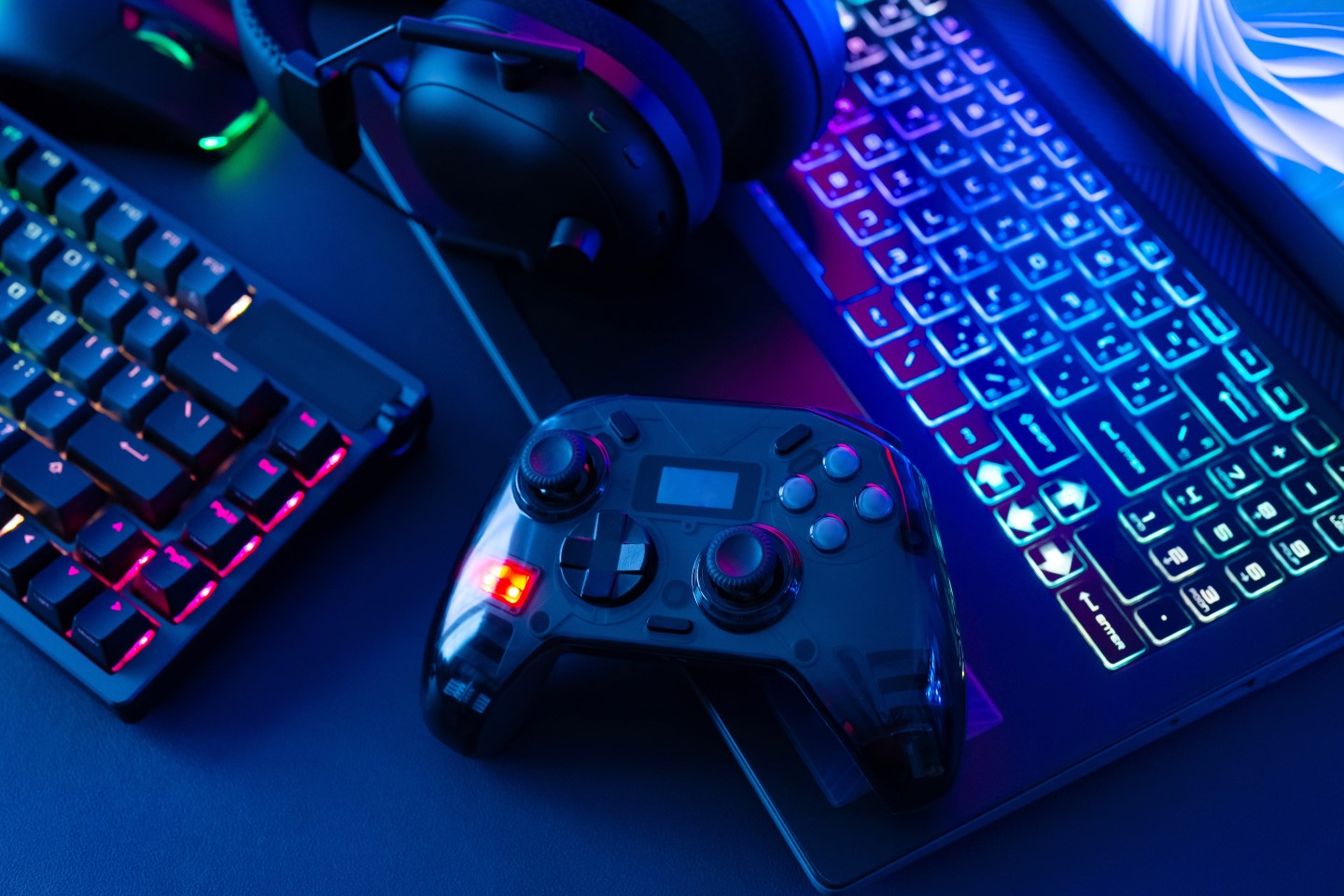
Accessible gaming: A lifeline for people with complex injuries
As a gamer, I know how much joy and fulfilment playing can bring. However, complex injuries can rob individuals of the ability to play the games they once loved.
A spinal injury, for example, might limit mobility, making standard controllers difficult to use. A brain injury could affect coordination or cognitive function, turning what was once an enjoyable activity into a frustrating impossibility.
The impact of complex injuries on gaming
For our clients who enjoyed gaming before their injury, the inability to play their favourite games can be devastating. It’s not just about losing a hobby, but also losing a part of their identity, a way to unwind and a means of connecting with others.
These barriers are real. Scope’s 2020 research notes 66% of gamers with an impairment or condition face gaming‑related barriers. The most common obstacle is the affordability of suitable assistive or adapted tech (30%), followed by the knowledge or time needed to set it up (23%), limited choice or availability (22%), inaccessible consoles (18%) and inaccessible games (17%).
This loss can feel personal, but with the right support and technology, becoming a gamer can be possible again.
The importance of accessible gaming
This doesn’t have to be the end of one’s gaming journey. With the right support and technology, individuals can regain the ability to play the games they enjoy – reconnecting with a part of themselves they thought they might have lost, and gaining a sense of control and independence.
Accessible gaming matches equipment and interfaces to the individual’s needs. For those with physical injuries, for example, adaptive controllers, switch inputs, voice control and eye‑tracking can enable physical access. For individuals with brain injuries, gaming can aid cognitive rehabilitation, improving memory, focus, and problem-solving skills.
Just Dance 2025 also demonstrates how accessibility is expanding in mainstream gaming. It offers mobility-friendly features such as ‘Seated Dance’ and flexible input options that reduce the physical demands of play, including popular tracks like Sabrina Carpenter’s Espresso. This shows inclusive design can keep rhythm gaming social and enjoyable for people with limited mobility, not just a niche audience.
Beyond entertainment, accessible gaming provides an inclusive environment where players can feel a sense of normalcy and joy, regardless of their limitations, by restoring routine, confidence and social connection.
Incorporating accessible gaming into compensation
Accessible gaming should be recognised as a vital part of rehabilitation and long-term care. For clients who enjoyed gaming before their injury, the ability to play again can be a crucial part of their recovery.
Funding should cover adaptive hardware (e.g. the Xbox Adaptive Controller), switches, mounts, specialist joysticks, software, assessments, setup time, training and ongoing support, addressing both affordability and the practical barriers as identified by Scope.
The cost of adaptive gaming equipment, software, and support services should be factored into compensation claims. This ensures claimants have the resources they need to regain their ability to play the games they enjoy.
Charities and support – SpecialEffect
Charities like SpecialEffect are at the top of this movement. The team is dedicated to helping individuals with physical and cognitive disabilities enjoy video games. Through innovative technology and personalised solutions, SpecialEffect assesses each individual’s needs through the assistance of a specialised occupational therapist who creates tailored gaming setups, making a difference between feeling isolated and feeling included.
Their support extends beyond hardware – providing training, encouragement and collaboration with rehabilitation teams to improve quality of life.
Fair play
Overall, accessible gaming can restore dignity and independence. Yet many people still face practical hurdles, from cost and limited availability to the time and know‑how needed to set things up.
By recognising these barriers and funding the right equipment, assessments and support, we can ensure people aren’t limited by circumstance and have a fair chance to enjoy the creative and social power of gaming.





